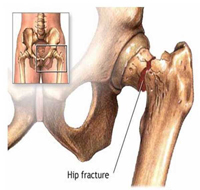 Each section has an ODEP rating listed. This is a rating issued by a group of medical professionals. The number refers to the minimum number of years that the implant has been around (3 being a low number of years and 10 being the highest) and the letter refers to the quality of published data that supports the implant (a. being the best c. being the worst). So far, this regulatory body has rated only hips.
Each section has an ODEP rating listed. This is a rating issued by a group of medical professionals. The number refers to the minimum number of years that the implant has been around (3 being a low number of years and 10 being the highest) and the letter refers to the quality of published data that supports the implant (a. being the best c. being the worst). So far, this regulatory body has rated only hips.
Resurfacing Hip
Fixation
Fixation of the cup in hip resurfacing is with a press-fit fixation initially. The surface of the cup on the outside is such that bone will grow into it to anchor it in place. The fixation on the femoral side is with cement. The resurfacing does not rely on a stem to go into the femoral canal around which the cement can get a grip. The femoral resurfacing chamfers the femoral ball and is then cemented over the top of this chamfered bone. This means on the femoral side that only a minimal amount of bone is removed. It does however mean that the bone within the femoral neck is relied upon to give support. Particularly in women, the quality of this bone becomes poor as the patient gets older with an increased risk of osteoporosis. For this reason, a resurfacing tends to be done more frequently in men and of a younger age group.
The bearing surface
The bearing surface is a metal on metal bearing surface. Because of the design of the component the metal head accurately reflects the true size of the femoral head and this gives a very natural feeling hip. The bearing surface is described as metal on metal but in fact will have a film of fluid between the two metal surfaces.
Stability
The large metal head gives the resurfacing excellent stability.
Durability
The long-term results of hip resurfacing are not yet known. Over the years, hip resurfacing has failed, primarily because of manufacturing problems. The newer manufacturing techniques have allowed a much better resurfacing to be made and with this, it is expected that the results will be better. Over the next few years, 10-year results will become available on the modern resurfacings.
Extra large heads
The benefit of the resurfacing described above appears to be the bearing surface with a femoral head, which is of normal anatomical size. This appears to give a natural feeling hip. The big disadvantage is that it can only be used on patients with good quality bone. The other disadvantage is that access to the hip is difficult because the head is retained. This means it is difficult to do the operation through a small incision. An increasingly popular joint replacement is now to combine the resurfacing head with a femoral stem.
The head is placed onto the stem with a Morse taper to allow the benefits of the resurfacing technology to be put onto a more conventional stem.
Un-cemented Hip
Cementless Stem
The stem is implanted into your femur (thighbone). These rely on a tight fit initially to give "press-fit" stability but in the longer term rely on bone growing into or onto the prosthesis to hold it in place. Both cemented and cementless systems can be very successful and your surgeon will choose whichever system he is most comfortable with using.
Cementless Cup
The cup is implanted into your acetabulum (socket). These also rely on a tight fit initially. Cementless cups are made up of two parts. The shell is made of metal and an insert that site inside of the shell. Inserts can be made from plastic, ceramic or metal. Your surgeon will decide which is best for you depending your activity and lifestyle.
Cemented Hip
In the 1960's Sir John Charnley who worked at Wrightington Hospital, Wigan, produced a total hip replacement. Prior to this attempts had been made to replace the hip using ceramic or glass femoral heads but it was Sir John Charnley, both an engineer and surgeon, who designed and used hip replacements that have, with the passage of generations, become the most popular today. Cemented hip replacements have a cup that fits into a pelvic socket or acetabulum and will also have a femoral stem that fits into the femoral shaft and on the top of this stem will be a ball that articulates with the acetabular component.
Initially in England, the emphasis was on using cement as this was the way the Charnley hip was made. Another popular hip is the Exeter hip. This is again uses cemented; the cement is used to fill the gap between the implant and the bone. The cement does not work as an adhesive but as filler.
Cementless Stems
A revision hip is used when previous hip surgery has failed or worn out. Revision hip stems can be either cemented or cementless and are always made of metal. Usually revision hip stems are bigger than primary hip stems to accommodate any bone loss. Usually the surgeon will need to be stem fixation in other areas of the thigh bone (femur) than obtained during the first procedure, therefore there are many different revision hips stems to accommodate these needs, for example, often bone further down the femur (towards the knee) provides better fixation points, therefore longer hip stems are often used.
A revision cup is usually uncemented, however, cemented cups are often used in revision, with bone defect being filled with artificial bone.
